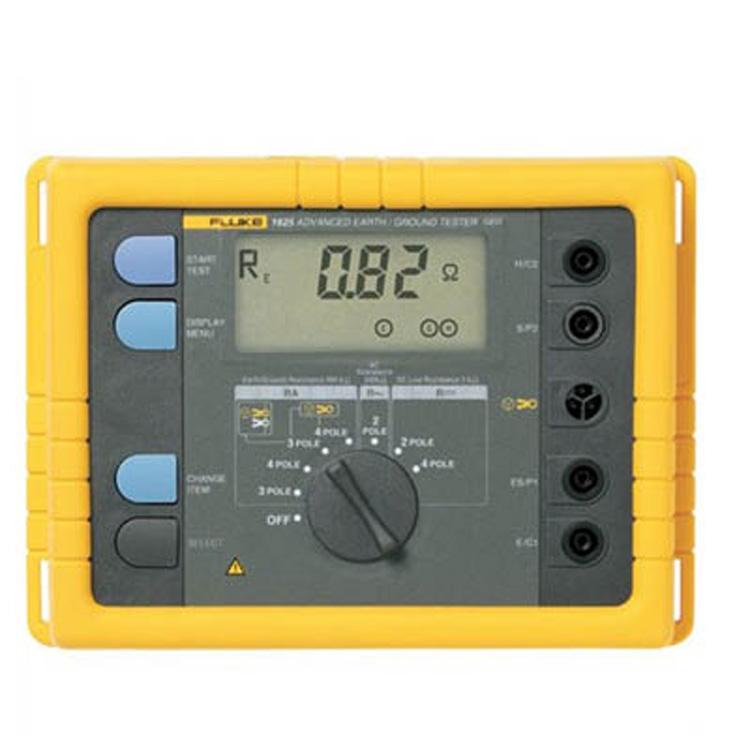|
Henchman US |

|
|---|
Fluke 1625 Earth Ground Tester
Product Code: FLUKE-1625
The Fluke 1625 GEO Earth Ground Testers offer an innovative solution, called Stakeless testing, to make your earth ground loop resistance testing quicker and easier. No need for a separate earth ground clamp.
Discontinued - Stock Clearance
- 3- and 4-pole Fall of Potential, earth resistance loop testing
- 4-pole Soil Resistivity testing.
- Selective earth ground rod testing using 1 clamp.
- Stakeless earth ground rod testing using 2 clamps.
- IP56 rated for outdoor use.
- Rugged carrying case
In addition, the Fluke 1625 offers these advanced features:
- Automatic Frequency Control (AFC) - identifies existing interference and chooses a measurement frequency to minimize its effect, providing more accurate earth ground value.
- R* measurement - calculates earth ground impedance at 55 Hz to more accurately reflect the earth ground resistance that a fault-to earth ground would see
- Adjustable limits - for quicker testing.
Stakeless testing: earth ground testers are able to measure earth ground loop resistances using only clamps. With this test method, two clamps are placed around the earth ground rod and each are connected to the tester. No earth ground stakes are used at all. A known, fixed voltage is induced by one clamp and the current is measured using the second clamp. Then the tester automatically determines the resistance of the earth ground rod. This test method only works if a bonded earth ground system exists for the building or structure under test, but most are. If there is only one path to ground, like at many residential applications, the Stakeless method will not provide an acceptable value and the Fall of Potential test method must be used. With Stakeless testing, the earth ground rod does not need to be disconnected—leaving the bonded earth ground system intact during test. Gone are the days of spending time placing and connecting stakes for each earth ground rod on your system—a major time saver. You can also perform earth ground tests in places you've not considered before: inside buildings, power pylons, or anywhere you don’t have access to soil.
Category: Insulation & Earth Ground
Brand: Fluke Test Equipment
Fluke 1625 Earth Ground TesterProduct Code: FLUKE-1625 Category: Test & Measurement / Insulation & Earth Ground
Price: $USD 2224.11 Brand: Fluke Test Equipment Description:
The Fluke 1625 GEO Earth Ground Testers offer an innovative solution, called Stakeless testing, to make your earth ground loop resistance testing quicker and easier. No need for a separate earth ground clamp. Discontinued - Stock Clearance
In addition, the Fluke 1625 offers these advanced features:
Stakeless testing: earth ground testers are able to measure earth ground loop resistances using only clamps. With this test method, two clamps are placed around the earth ground rod and each are connected to the tester. No earth ground stakes are used at all. A known, fixed voltage is induced by one clamp and the current is measured using the second clamp. Then the tester automatically determines the resistance of the earth ground rod. This test method only works if a bonded earth ground system exists for the building or structure under test, but most are. If there is only one path to ground, like at many residential applications, the Stakeless method will not provide an acceptable value and the Fall of Potential test method must be used. With Stakeless testing, the earth ground rod does not need to be disconnected—leaving the bonded earth ground system intact during test. Gone are the days of spending time placing and connecting stakes for each earth ground rod on your system—a major time saver. You can also perform earth ground tests in places you've not considered before: inside buildings, power pylons, or anywhere you don’t have access to soil. |
 |




